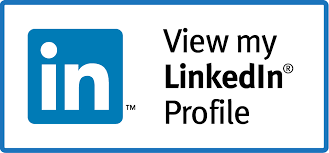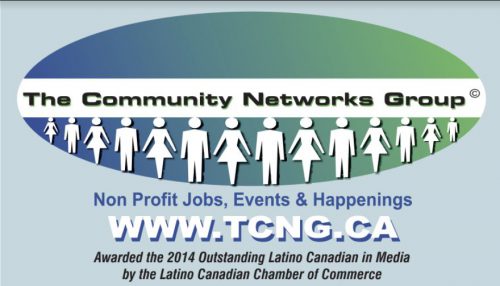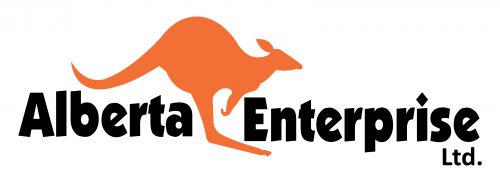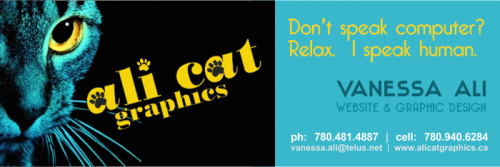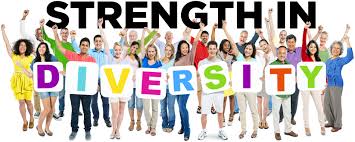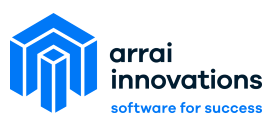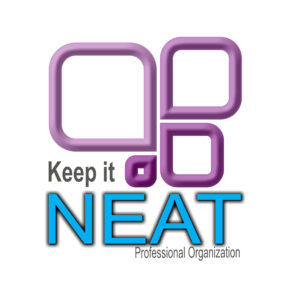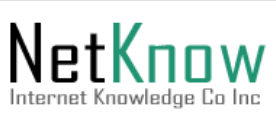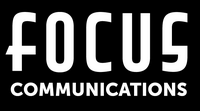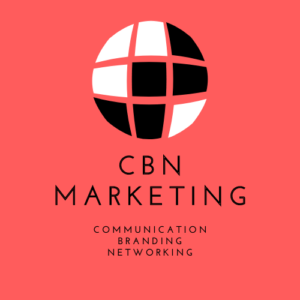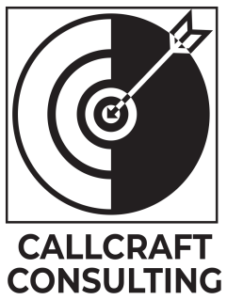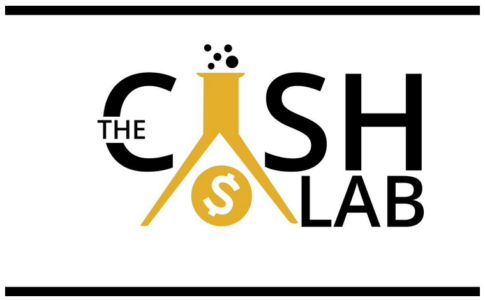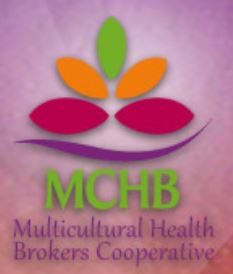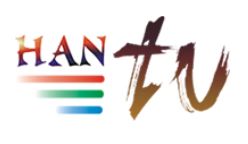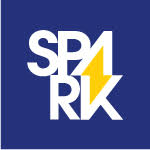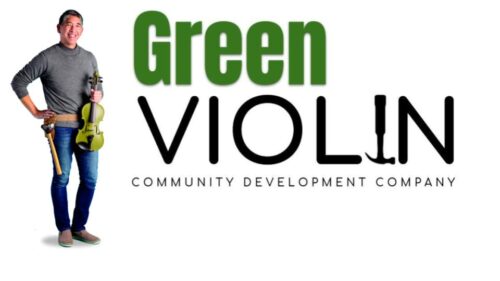Wayfinding in the Smart-Gig-Open-Ecosystem
You want to find a meaningful happiness. Though we have come to think of ourselves as consumers, we actually make a living and get our sense of self primarily from the value we generate for others. How we apply our strengths to generate value has changed dramatically over the years. Now four important emerging conditions are changing our world at an incredibly accelerating pace:
- Automation of work and exponential platforms
- Scaling operations and outsourcing of labour
- Monopoly versus open-source digital economics
- Diversification and integration or polarization
Each of these trends poses both threats and opportunities for self-employed workers and small businesses. As with all scenarios, whether you see opportunities or threats is a matter of perspective and attitude. When the pace of change is accelerating we need to be proportionately better at strategic planning if we are to continue finding the best way forward.
 Just 150 years ago most people lived off the land, mostly doing family-scale farming. Farmers were independent business people, essentially buying, selling and trading produce as their forebears had for countless generations. Things changed. First it was the global transport economy, then manufacturing and service economies, then the knowledge and information economies, and then the sharing economy.
Just 150 years ago most people lived off the land, mostly doing family-scale farming. Farmers were independent business people, essentially buying, selling and trading produce as their forebears had for countless generations. Things changed. First it was the global transport economy, then manufacturing and service economies, then the knowledge and information economies, and then the sharing economy.
Now economists talk of four critical components of the emerging economy. The economy is morphing into something different: 1) reaching a tipping point of automation, sometimes called the Forth Industrial Revolution[1]; 2) organizations are scaling operations with more people doing short term contract work, or gigs, 3) while a small handful of near monopolies emerge we have an abundance of open-source resources; and 4) businesses are figuring out how to integrate diversity for new value generation by participating in patterns of relationships that closely resemble ecosystems.
So now it’s the ‘smart gig open ecosystem’ economy. At its best the smart gig open ecosystem will offer a highly agile, innovative and efficient way of organizing human work. It will leverage synergies from personal, organizational and artificial intelligence in ways that optimize overall value generation. It will bring ‘talent to task‘ for as long as it takes to get a job done and no longer. It will link people together in networks of value generation. At its worst, if not carefully managed, the smart gig ecosystem will push many people beyond their comfort zones and possibly beyond their safety zones.
We really should look at the bigger picture to see how these aspects of the emerging economy interact and build on prior economic progress. Behind the rapid acceleration of economic change is the introduction of innovative management and technology platforms that facilitate expanding economies of scale. You can see a longer term pattern emerging and maybe we can figure out where the economy is going. Most importantly, we’ll see how to strategically position yourself for advantage.
How Did We Get Here? – Economic Progress to 2000
Starting about 150 years ago discoveries in fuel and the invention of engines changed the shipping industry making a global economy possible. This gradually opened massive global market demand for more imported goods. Air flight later accelerated its growth. At the same time, tractors with fuelled engines made farming more efficient so farms got larger, eventually becoming the big businesses they are today. Early surplus farm labour moved to the manufacturing opportunities in the urban centres. Cheap labour fed rapid growth in the manufacturing industry. People earned wages and spent much of it on consumer items.
Then management science and automation of manufacturing made more mass production possible, resulting in fewer workers and lower costs for consumers. Mass production and massive global markets combined synergistically to super-accelerate economic growth. Then public stock markets opened up to finance still larger shipping and manufacturing ventures, adding fuel to the fiery economy.
Statistics Canada finds that between November 2015 and October 2016, 9.5 percent of people 18 and over living in Canada participated in the “sharing economy,” as users or workers (Statistics Canada, 2017) … one estimate for the United States suggests that 50 percent of the US workforce will be contractors working through digital platforms by 2020 (Carlton, Korberg, Pike, & Seldon, 2017)
You can deliver around the world products made in highly efficient large scale plants. How, then, do you get people to buy products when they are accustomed to making their own things down on the farm? Mass communications technologies like radio, TV and later, the web, made mass marketing possible.
Mass marketing promoted interest in new breakfast cereal in a box, washing machines and cars. This added to the acceleration started with massive global markets and mass production. The giant economies of scale meant that each unit produced would cost less to make. The cost of purchasing, installing and operating a giant machine is paid off with each unit produced. Therefore it makes sense to invest in large capital-intensive manufacturing facilities. It would also take fewer jobs to produce the same output of goods. The 20th Century economy was exploding!
By mid 20th Century, people were getting better educated. They were learning trades and professions that their parents had never heard of. Indeed, many careers had not existed previously. A growing number of these were service occupations rather than manufacturing jobs. They included more managers, accountants, lawyers, engineers, medical professionals, but also more teachers, secretaries, drivers and retail clerks. Rather than manual skills, each new occupation had a domain of specialized information and knowledge. When computers emerged in the later 1950s we had occupations like programmers and systems analysts. While it was called a service economy at the time, this was actually the beginning of the knowledge economy. A greater portion of people in the developed world made a living reselling the value of their specialized knowledge. Many became consultants.
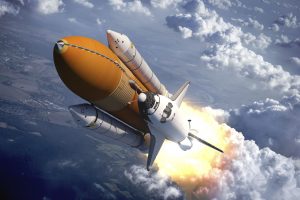 The so-called information economy began as information became freely available on the web. The truth is, of course, the economy has always been based on information and knowledge. The designs of goods are made of knowledge by knowledge of processes. Farmers’ wisdom made food. Even nature foods are acquired by hunting and gathering skills.
The so-called information economy began as information became freely available on the web. The truth is, of course, the economy has always been based on information and knowledge. The designs of goods are made of knowledge by knowledge of processes. Farmers’ wisdom made food. Even nature foods are acquired by hunting and gathering skills.
As for the world of finance, in the 1993 book The End of Capitalism, author and management guru Peter Drucker said that the old style capitalist was being replaced by mutual and pension funds owned by ordinary working people. A growing portion of all economic wealth is tied up in these funds. Investment decisions are being made, not by tycoons and entrepreneurial mavericks, but by investment analysts using management science, predictive analytics and mathematical models. Similarly, venture capitalists generally do not just invest their own funds but the funds of wealthy individuals and they use very advanced investment management tools.
“42 percent of the Canadian labour force is at a high risk of being affected by automation within the next 10 to 20 years… We also discovered that there will likely be major job restructuring as a result of new technology. Using a different methodology, we found that nearly 42 percent of the tasks that Canadians are currently paid to do can be automated using existing technology.
— Brookfield Institute
Maybe getting super rich isn’t about working harder, as the super rich will plead, and maybe not so much about greed, as the rest of us claim. Maybe getting rich today is more about working smarter (and the luck of being in the right place at the right time). That means making better use of personal, organizational and artificial intelligence. Overall, its about thinking of management practice as a science as well as an art. Moreover, we are all essentially management decision makers.
Smart methods used in management science[2] have been around since before the 1950s for optimization of manufacturing processes. If a single team of developers creates a new assembly line method or technology it will have several net benefits. It is likely to reduce risks, waste, labour costs and consumer prices, while improving product quality as well as the competitive position of the companies that adopt it. Competitors are then at a disadvantage so they too must adopt or die. Consumers don’t complain[3]. Workers are either retired, retrained for other tasks and jobs or laid off. But around 2000 things began to change dramatically.
What Happens Beyond 2000?
Like a double helix, technology and the economy, fueled by venture capital, grew at an accelerating rate through the 20th Century, proving that success breeds success. The tech bubble of the late 1990s didn’t stop investment and didn’t stop progress. Now, in less than two decades since, new information technology platforms on the web have been dramatically changing the way people live and work. There are three direct impacts to the world of work to pay attention to. Again, the Forth Industrial Revolution, the gig economy and the business ecosystem.
The invention of the web had been slowly incremental over at least two decades prior to 1993. Experts knew it would take off sooner or later. HTTP and HTML protocols made the difference, followed soon by data compression algorithms. Once people got a graphical interface and pictures everyone knew some very interesting applications would emerge. A lot of money was invested and lost on picking winners. We didn’t yet fully understand the power of multi-sided platforms and network effects.

Since 2000 we have seen the super-exponential growth of unicorn companies capitalizing on network effects on multi-sided platforms. These include companies such as Amazon, eBay, Facebook, Google, eHarmony and LinkedIn. Users are the content providers so the value of joining grows as more people join. The network effect appears to have no top end for economies of scale! Bigger is always better. It is a positive feedback loop. Unlike commodities with a limited supply, and costs of manufacturing, these platforms need relatively little capital investment and have a minuscule cost of adding new members. Hence the unicorns — and accidental billionaires! Their revenue models depend on sales of advertizing space targeting users. Once the pump is primed its easy to make untold fortunes.
The Forth Industrial Revolution
Some people divide the world’s economic progress into three industrial revolutions – agriculture, manufacturing and services. Others start with manufacturing, ignoring that agriculture has always been an industry. These kinds of models are convenient, but they don’t tell the whole story. However, if we follow this line of reasoning, the so-called Forth Industrial Revolution is all about the displacement of tasks and jobs by process automation, smart machines and robots. It includes applications of AI, Machine Learning (ML), Data Analytics, Augmented Reality (AR), Virtual Reality (VR), blockchain, 3D printing, cloud computing, the internet of things (IoT), quantum computing and, of course, any combination of these.
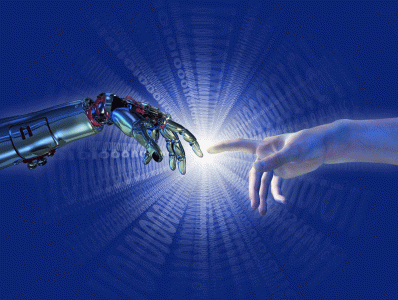 Artificial intelligence is the most important breakthrough in the history of our planet. At our essence, humans are evolved thinking things, goal seeking problem-solvers. Now we invent a machine that thinks better and faster than we do. That’s great if they are our servants. It’s not so great if some people control AI and others don’t. Remember, the diversity in human nature means we need only a selfish few to make life difficult for the others. The open-source economy is the ‘alternative economy’[4]. The open-source world is organically wiring a global brain with experimental tool kits.
Artificial intelligence is the most important breakthrough in the history of our planet. At our essence, humans are evolved thinking things, goal seeking problem-solvers. Now we invent a machine that thinks better and faster than we do. That’s great if they are our servants. It’s not so great if some people control AI and others don’t. Remember, the diversity in human nature means we need only a selfish few to make life difficult for the others. The open-source economy is the ‘alternative economy’[4]. The open-source world is organically wiring a global brain with experimental tool kits.
Automation of business processes and use of management science to date have already displaced millions of workers and driven competing businesses into bankruptcy. New jobs are created but the rate of new job creation doesn’t necessarily match the rate of job losses[5]. Higher unemployment then makes wages lower making it more attractive for new industries to hire smart labour to do things machines still cannot do. It is expected, however, that eventually smart machines will be able to do anything any human can do — and more, faster and cheaper.[6]
So What?
One of the most important things a platform like Wayfinders can do is help members be aware of the emerging impacts of automation on their industries and occupations. Also, Wayfinders can provide AI support as much as possible so members can continue to be competitive in their markets. Already people are taking computers and their programs for granted. Great advances have been made in virtually every line of human endeavor to leverage the power of human intellect and knowledge. Wayfinders can bring to small business the power of such tools and methods as management science (optimization), business analytics, predictive analytics, data and visual analytics, and machine learning.
The Gig and Sharing Economy
In the gig economy, more people are working short-term contracts without employee benefits, long term income stability or a shared workspace. This is not a new way to make a living, as artists, writers, performers, musicians and consultants have been doing this work for centuries. But the portion of the workforce doing this work arrangement is rapidly growing.[7]
“Gigs” – short-term contracts mediated by digital platform businesses – are increasing, and have the potential to transform the future of work in Canada and globally. The work is precarious – meaning it is temporary, contract-based, low paid, and provides no training, health, or retirement benefits.
— Towards An Understanding Of Workers’ Experiences In The Global Gig Economy
The emergence of online employment platforms has changed the fluidity of work. Operations such as Mechanical Turk, Uber, TaskRabbit, Upwork and Fiver match short term contract work with workers locally or anywhere in the world. When you open a job competition to everyone in the world it becomes a buyer’s market. Companies can hire skilled IT workers, for example, or freelance designers and technical writers, who live in parts of the world with a very low cost of living. This work may be good for them, but it levels the going price of labour relatively uniformly around the globe. Essentially there is increasingly only one labour market for many occupations in the information economy, and those markets are controlled by the platform owners (e.g. Amazon, Uber)
 There is a flip side for agile small businesses. Over time this buyer’s market should actually inspire more companies to hire contract workers, thereby adding to the demand side of the equation, and consequently driving labour costs somewhat upward. The outcome is that more innovative companies are hiring short-term workers from online platforms. They can be more agile, hiring only as needed, assuming the quality of labour is fairly consistent. Verifying credentials and using reliable rating systems become more important.
There is a flip side for agile small businesses. Over time this buyer’s market should actually inspire more companies to hire contract workers, thereby adding to the demand side of the equation, and consequently driving labour costs somewhat upward. The outcome is that more innovative companies are hiring short-term workers from online platforms. They can be more agile, hiring only as needed, assuming the quality of labour is fairly consistent. Verifying credentials and using reliable rating systems become more important.
So What?
Increasingly, the line between employer and employee, or company and worker, is becoming blurred. In either role, people and their relationships are value generators. Wayfinders is to be a support system for value generators navigating the turbulent conditions of the new economy.
We are finding that there are two broad responses to the way things are shaping up in the gig economy. Some people feel more vulnerable while others see more opportunities. We have a genetic diversity of personality types. This is an advantage for our species. While some people want more normalized (standard) structures and routines, others prefer change and variety. Society as a whole gets from this some balance of productivity (efficiency) and innovation (continuous improvement). We need people who persist and others who pivot, both explore and exploit.
Regardless of its drivers, the gig economy is creating conditions more favourable to those natural entrepreneurs who like the freedom to choose and change their minds. They will enjoy a change of workplace scenery for a while and maybe get a bit bored toward the end of the term. Then they start to get excited at the next prospect. These people would not consider themselves ‘precarious workers’. Similar to reports from the world of entrepreneurs in general, however, we are unlikely to hear reports of their failures. They tend to simply fall off the radar.
Those who prefer productive routines and structures, will find the gig economy creates a lot of uncertainty and therefore anxiety. They will have difficulty adjusting to different work environments, and just when they get comfortable and fully productive, the contract comes to an end. Then they dread the prospect of the job hunt. Understandably, the demand for co-location facilities is on the rise, as people need to socialize and make longer term relationships. Eventually the gig economy will normalize.
Essentially we are seeing the breaking down of large bureaucracies. Economies of scale are changing due to new disruptive information technology platforms. Large companies have not been creating long term jobs at the rate the once did. Competition in a turbulent economy is forcing them to be more innovative and agile. Now they are outsourcing more non-core work.
We need a way to integrate diverse talented value generators into a productive and sufficiently stable, yet innovative, agile supply web. For the past couple of decades, economists have identified ‘industry clusters’ that appear to offer viable economic platforms. Alberta has an oil and gas industry cluster. Silicon Valley has an information technology cluster. A number of industrial cities have manufacturing clusters, such as the greater Toronto area. We need to be smarter about clusters.
Open Source Economy
Do the monopolistic online platforms have sufficient feedback learning loops to ensure the users’ needs are met most efficiently and effectively? Or is there an inherent constraint applied to productivity and innovation when the shareholders are not the same as the users? Maybe there is a better way to facilitate progress. Some authors and experts feel that, due to their enormous potential influences on public good and the demands for corporate responsibility, these virtual global monopolies should be operated as public utilities.

Similarly, the breakthrough commercial programs, such as MS Office, became near global monopolies while millions of programmers developed alternative applications for every problem-solution imaginable. They are collectively producing a huge surplus of useful but non-commercial software. Because it has been so competitive and difficult to commercialize software the developers offered it as shareware. This was the beginning of the sharing economy.
Then, following the precedent of the open source Linux operating system, the shared software was gradually offered as open-source. That means the lines of program code were freely given (sometimes sold) to anyone who wanted to develop it further for different applications[8]. This led to open education, open data and open government. The economy was fundamentally changing due to the fact that you can copy information infinitely without losing or depleting the original. The information economy is fundamentally different from a commodity or energy economy. New intellectual property laws were needed to protect the R&D investments.
Currently there is a bifurcation of the economy into global monopolies and corporate hierarchies on one hand and networked and collaborative open-source economies on the other.
So What?
The open-source digital world is not restricted to software. It is opening up. The open-source world has spread to open education, open data, open government and more, wherever information is involved. It includes crowd-sourcing as well. We realise that the possibilities are limitless. In my opinion, it is not only possible but necessary and inevitable (if we live long enough) that there will be a singularity of shared human knowledge. The web has been called a global brain. If it is a global brain, then it is still a falling down toddler, finding its feet.
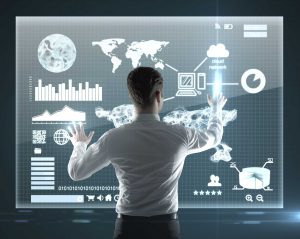 Global monopolies with gigantic economies of scale are gathering wealth and power and thereby polarizing and mobilizing an alternative open economy. That open economy in an open society is able to assemble an integrated intelligence in which we will all participate. We can see this emerging through Linux, Mozilla, Wikipedia, the Collective Commons and even the internet governing body itself.
Global monopolies with gigantic economies of scale are gathering wealth and power and thereby polarizing and mobilizing an alternative open economy. That open economy in an open society is able to assemble an integrated intelligence in which we will all participate. We can see this emerging through Linux, Mozilla, Wikipedia, the Collective Commons and even the internet governing body itself.
Is there really any good reason why the power tools of AI should be restricted to only a few? And what stops us from crowd-sourcing AI research and development? Just the power of intent!
As a social enterprise and a co-operative, Wayfinders Business Co-operative is positioning to be an integral component of the open economy. Shareholders are the service users so the feedback learning loops can be very short and quick, allowing members to plug in and achieve their greatest value generation and get the best return on investment.
The Business Ecosystem
Supply chains have been around for ever. Supply chains roughly follow value chains. Any finished product has undergone a series of value-adding steps. Normally companies in a chain like to routinely do business with the same businesses. Constantly switching suppliers and finding new customers can be costly. The chain can take different forms[9]. If a single value generator in the supply chain adds more than one item of value, then the supply chain is shorter than the value chain. In fact, in a vertically integrated industry, one company might own most or even all parts of the value chain, from beginning to end, from rock pit to retail. They thereby reduce transaction costs and risks and can optimize the entire production chain by managing inventory volumes. The downside is that they are now locked in. They can’t easily switch to a new supplier that is offering lower costs. They risk becoming less competitive.
 Fortunately, the use of management science and AI are making it possible to have very efficient and competitive smaller scale operations. In today’s information world, companies are switching suppliers more often. With business intelligence tools they are both methodical and agile in detecting a small price drop and quickly calculating the best volume and time to purchase.
Fortunately, the use of management science and AI are making it possible to have very efficient and competitive smaller scale operations. In today’s information world, companies are switching suppliers more often. With business intelligence tools they are both methodical and agile in detecting a small price drop and quickly calculating the best volume and time to purchase.
When you put a number of competing jewellery manufacturers, wholesalers and retailers together in a region, such as Amsterdam or New York, you get an industry cluster. These clusters tend to be stable and efficient producers of value. There are long standing supply chain relationships, and competitors understand each others’ advantages and vulnerabilities, their market niches, and so on. Operations are normalized. They draw investment because they can produce reliable profits year after year. Skilled staff move from company to company sharing best practices as they go.
One shortcoming of cluster models of the economy is that they focus on specific industries. In reality, businesses centered in different industries can play very important roles across other industries. For example, a head hunter company can get very good at finding executives in different industries. An office supply store doesn’t care what industry you’re in. A finance company may be able to put together excellent financing deals in different industries. The experience they get in one industry can largely be transferred across industries. But the presence of these cross-sector companies is good for the health of the business ecosystem.
Another shortcoming ofthe idea of the industry cluster is that it focuses on the structure of relationships among the many companies rather than on the diversity of complementary functions. Structures are easier to see. If we think of a cluster as an ecosystem of different species each generating unique value, then we have a better model to help us guide the development of the system. Instead of waiting for evolutionary processes, we can actually engage in more conscious, deliberate planning and development of business ecosystems. “Form follows function”– we don’t care how the job gets done, as long as it gets done. We know what requirements businesses have[10].
So What?
As it turns out the best way to promote a climate for business is to build a community of trust! Business ecosystems recognize our natural social instincts and social intelligence. They accept that people cannot fully function in cyberspace alone. We need to see each other face to face in order to establish a sense of mutual understanding, trust, respect, and to create a collegial bond. Wayfinders is developing a club system to play this role. Business clubs and business networking have been around for a very long time. But now we have the opportunity to integrate the best practices from some of the best organizations.
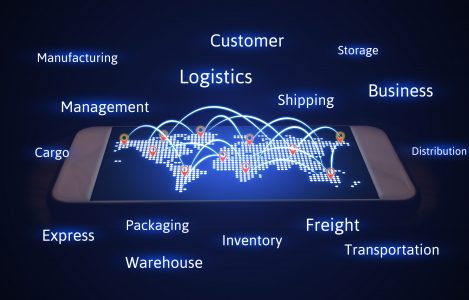
However, the business ecosystem is also a beneficiary of cloud platform technology. Now we at Wayfinders, and others, are trying to create a business matchmaking system on a cloud platform to facilitate successful business ecosystems. We can offer productivity software as a service, crowd-sourced wisdom, crowd-funding, collaboration tools and, there is no end… to support the ecosystem!
Some new economy theorists are speculating that we are about to witness the spontaneous emergence of a new kind of economic order from the chaos. This would be not just more of the same, but something fundamentally different from what we have seen in our past. If you are not connected to some business ecosystem, you will not be able to tap into the rich support system needed for you to express your talent, achieve what you passionately aspire to, or reap the honest rewards of your potential.
In Summary
The rapid acceleration of change and the exponential growth of complexity are creating a chaotic environment for value generators. The line between employee and contractor is getting more blurry. We are facing not only the acceleration of automation, the quickening of the job cycle, the bifurcation of the economy and the growth of connective networks, but the unpredictable convergence of all these and more. The new smart gig open ecosystem may be seen as threat or opportunity. The POV is yours, but together we can choose to make opportunities.
To address these four important and related economic trends, Wayfinders is positioning to assist people so they can:
- identify the emerging risks of automation in their occupation or industry so they can proactively seek alternative ways of applying their talents
- locate contract work and share in platform tools, benefits packages and collocation options
- take more control over the development of platforms that support value generation and distribution of rewards
- form tight-knit niches in an ecosystem of trusted colleagues, collaborators, and partners
As a co-operative, owned by its members who are also its users, Wayfinders will able to achieve economies of scale to provide services that those members alone could not afford. It will serve as a new type of organization to replace bureaucracy. One of the most important services Wayfinders could offer its members is collective wisdom and strategic planning support for decision making.
[1] Layoffs due to automation started in Detroit in the early 1970s before foreign car competition came to North America
[2] AKA operations research
[3] With choice fatigue, more consumers use lowest price buying criteria
[4] “Open-source economics is an economic platform based on open collaboration for the production of software, services, or other products.” “Networked environment makes possible a new modality of organizing production: radically decentralized, collaborative, and non-proprietary; based on sharing resources and outputs among widely distributed, loosely connected individuals who cooperate with each other without relying on either market signals or managerial commands.”[6] From Wikipedia
[5] Official statistics don’t necessarily capture part time work, self-employment, ,underground employment, under-employment and labour force dropouts.
[6] Many second-guessers are still waiting for the tipping point at which AI outsmarts every aspect of human intelligence. Meanwhile there is substantial progress in the areas of artificial intuition and artificial emotional intelligence (guessing how people are feeling). There seems to be no human talent or skill that cannot eventually be reproduced through artificial intelligence of one form or another. After all, humans are simply biological calculators. No one has made a definitive scientific argument about the role of consciousness or “spirit” in intelligence.
[7] Towards An Understanding Of Workers’ Experiences In The Global Gig Economy, Uttam Bajwa, Lilian Knorr, Erica Di Ruggiero, Denise Gastaldo, Adam Zendel; Toronto, April 2018
[8] See GitHub, ForgeSource, RedHat, Apache, Zapier, etc.
[9] Shared risks and rewards: If everyone in an industry is using the same supplier then that supplier gets a very large economy of scale commensurate with its growing market share, and can offer the best low prices. If there is a failure at the plant, however, there is no viable backup supplier. This is a risk of a monopoly. On the other hand, to the extent that companies in a supply chain switch suppliers or customers, the supply chain gets fragmented and less efficient but more reliable. There is a trade-off.
[10] Over the past 20 years, there has been growing interest in the entrepreneurial success of Silicon Valley. Some of the movers and shakers of the successful region have produced a series of small books on how to clone the success of Silicon Valley. They call it the Rainforest innovation ecosystem approach. In essence, the business ecosystem thrives on a rich integrated diversity of personalities, talents, skills and knowledge bases.



 Just 150 years ago most people lived off the land, mostly doing family-scale farming. Farmers were independent business people, essentially buying, selling and trading produce as their forebears had for countless generations. Things changed. First it was the global transport economy, then manufacturing and service economies, then the knowledge and information economies, and then the sharing economy.
Just 150 years ago most people lived off the land, mostly doing family-scale farming. Farmers were independent business people, essentially buying, selling and trading produce as their forebears had for countless generations. Things changed. First it was the global transport economy, then manufacturing and service economies, then the knowledge and information economies, and then the sharing economy. The so-called information economy began as information became freely available on the web. The truth is, of course, the economy has always been based on information and knowledge. The designs of goods are made of knowledge by knowledge of processes. Farmers’ wisdom made food. Even nature foods are acquired by hunting and gathering skills.
The so-called information economy began as information became freely available on the web. The truth is, of course, the economy has always been based on information and knowledge. The designs of goods are made of knowledge by knowledge of processes. Farmers’ wisdom made food. Even nature foods are acquired by hunting and gathering skills.
 Artificial intelligence is the most important breakthrough in the history of our planet. At our essence, humans are evolved thinking things, goal seeking problem-solvers. Now we invent a machine that thinks better and faster than we do. That’s great if they are our servants. It’s not so great if some people control AI and others don’t. Remember, the diversity in human nature means we need only a selfish few to make life difficult for the others. The open-source economy is the ‘alternative economy’
Artificial intelligence is the most important breakthrough in the history of our planet. At our essence, humans are evolved thinking things, goal seeking problem-solvers. Now we invent a machine that thinks better and faster than we do. That’s great if they are our servants. It’s not so great if some people control AI and others don’t. Remember, the diversity in human nature means we need only a selfish few to make life difficult for the others. The open-source economy is the ‘alternative economy’ There is a flip side for agile small businesses. Over time this buyer’s market should actually inspire more companies to hire contract workers, thereby adding to the demand side of the equation, and consequently driving labour costs somewhat upward. The outcome is that more innovative companies are hiring short-term workers from online platforms. They can be more agile, hiring only as needed, assuming the quality of labour is fairly consistent. Verifying credentials and using reliable rating systems become more important.
There is a flip side for agile small businesses. Over time this buyer’s market should actually inspire more companies to hire contract workers, thereby adding to the demand side of the equation, and consequently driving labour costs somewhat upward. The outcome is that more innovative companies are hiring short-term workers from online platforms. They can be more agile, hiring only as needed, assuming the quality of labour is fairly consistent. Verifying credentials and using reliable rating systems become more important.
 Global monopolies with gigantic economies of scale are gathering wealth and power and thereby polarizing and mobilizing an alternative open economy. That open economy in an open society is able to assemble an integrated intelligence in which we will all participate. We can see this emerging through Linux, Mozilla, Wikipedia, the Collective Commons and even the internet governing body itself.
Global monopolies with gigantic economies of scale are gathering wealth and power and thereby polarizing and mobilizing an alternative open economy. That open economy in an open society is able to assemble an integrated intelligence in which we will all participate. We can see this emerging through Linux, Mozilla, Wikipedia, the Collective Commons and even the internet governing body itself. Fortunately, the use of management science and AI are making it possible to have very efficient and competitive smaller scale operations. In today’s information world, companies are switching suppliers more often. With business intelligence tools they are both methodical and agile in detecting a small price drop and quickly calculating the best volume and time to purchase.
Fortunately, the use of management science and AI are making it possible to have very efficient and competitive smaller scale operations. In today’s information world, companies are switching suppliers more often. With business intelligence tools they are both methodical and agile in detecting a small price drop and quickly calculating the best volume and time to purchase.
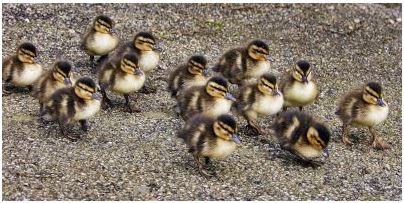





 Organizational Intelligence
Organizational Intelligence Community intelligence building is a key purpose behind the new social enterprise, Wayfinders Business Co-operative. It’s not just about business, but about how we all work together organically in an ecosystem of trusted intellectual and economic transactions. Wayfinders incorporates both collective and collaborative intelligence, guided, of course, by human values.
Community intelligence building is a key purpose behind the new social enterprise, Wayfinders Business Co-operative. It’s not just about business, but about how we all work together organically in an ecosystem of trusted intellectual and economic transactions. Wayfinders incorporates both collective and collaborative intelligence, guided, of course, by human values.
 Essentially this cluster of related sciences is evolving a unified explanation to encompass all life and intelligence. Management science finds ways to optimize performance or production lines, business processes and organizations of all kinds. It results in giant economies of scale in mass production, for example, so you can buy goods for cheaper. It can also be used to assist less formal organizations such as communities. If we prefer to think of communities as natural and organic, then we can refer to optimized communities as intentional communities.
Essentially this cluster of related sciences is evolving a unified explanation to encompass all life and intelligence. Management science finds ways to optimize performance or production lines, business processes and organizations of all kinds. It results in giant economies of scale in mass production, for example, so you can buy goods for cheaper. It can also be used to assist less formal organizations such as communities. If we prefer to think of communities as natural and organic, then we can refer to optimized communities as intentional communities. Psychology is refining us. Advances in psychology are among the most profound of all advances in the last 150 years. But this kind of progress plays too close to the human heart, and at heart, we are creatures of habit, not inclined to change behaviours until we have to. So while we have a better appreciation of mental health, there is a growing concern over mental illness. Meanwhile, there are probably a lot more psychologists in the marketing and sales industry than there are in clinical research and practice.
Psychology is refining us. Advances in psychology are among the most profound of all advances in the last 150 years. But this kind of progress plays too close to the human heart, and at heart, we are creatures of habit, not inclined to change behaviours until we have to. So while we have a better appreciation of mental health, there is a growing concern over mental illness. Meanwhile, there are probably a lot more psychologists in the marketing and sales industry than there are in clinical research and practice.
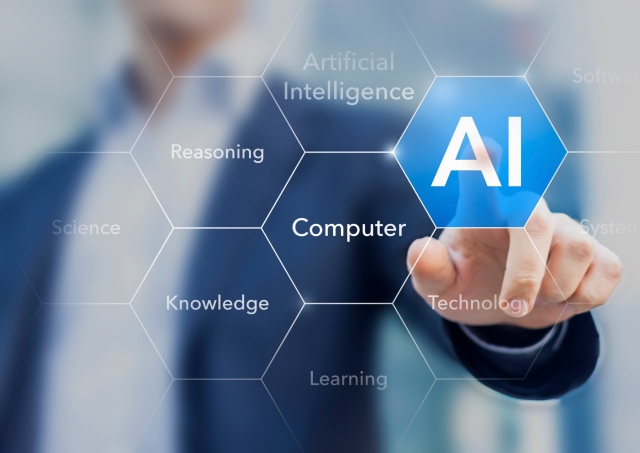
 We will need to structure the public dialogue to deal with complex issues such as the impacts of AI on modern civil systems (society, economy, culture, and politics). We have had many brainstorming tools in practice for longer than my lifetime.
We will need to structure the public dialogue to deal with complex issues such as the impacts of AI on modern civil systems (society, economy, culture, and politics). We have had many brainstorming tools in practice for longer than my lifetime.
